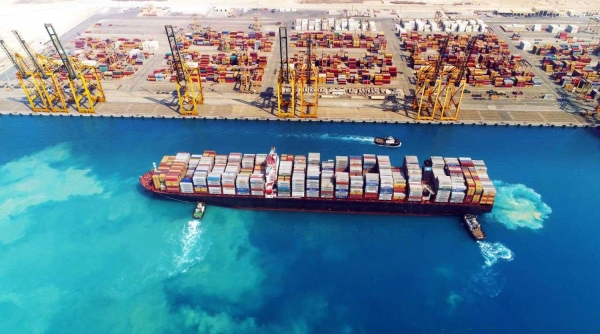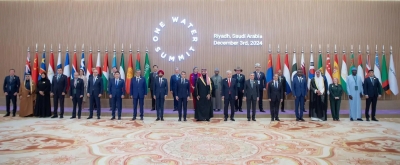

The Saudi Non-Oil Exports are the exports of the Kingdom of Saudi Arabia of non-oil goods. The Saudi Export Development Authority (SEDA) seeks to increase these exports from 16 percent to 50 percent of the gross domestic product (GDP), aligning with Saudi Vision 2030.
Growth of Saudi non-oil exports
According to the General Authority for Statistics data in the fourth quarter of 2020, Saudi non-oil exports constituted about 21 percent of the GDP. According to the first quarter of 2021 data, they constituted 24 percent of total exports. In 2019, the value of non-oil exports was SAR229.2 billion before declining in 2020 to SAR204.4 billion. The Kingdom exports non-oil products to more than 170 countries around the world.
Saudi non-oil exports achieved the highest half-year value in its history in the first half of 2021 with a 37 percent increase, reaching SAR125.3 billion, after being SAR91.7 billion in the first half of 2020. On the other hand, the sector increased quantity by 8 percent, to 34.7 million t in the first half of 2021.
During the first half of 2021, the Kingdom exported products to 170 countries worldwide. The United Arab Emirates was the top export destination, with an export value of SAR17.0 billion, followed by China with SAR16.8 billion, then India with SAR7.1 billion.
In 2022, non-oil exports (including re-exports) grew by 13.7 percent from the year 2021, according to the 2022 International Trade Report by the General Authority for Statistics. The total value reached SAR315.7 billion, up from SAR277.5 billion in 2021. Non-oil exports (excluding re-exports) rose by 14.8 percent, while re-export values increased by 8.6 percent during the same period.
In 2022, the chemical and related industries emerged as major contributors to non-oil exports, representing 35.8 percent of the total non-oil exports. This sector saw a significant increase of 34.5 percent and an additional SAR29.0 billion compared to 2021. Plastics, rubber, and their products followed, making up 28.3 percent of total non-oil exports.
Types of Saudi non-oil exports
Saudi non-oil exports include precious metal products, jewelry, base metal, medicines, personal supplies, textiles, electronics, heavy equipment, vehicles and spare parts, consumer durables, paper and packaging, wood products, food and beverage products, plastics products, rubber products, in addition to construction materials, chemicals, polymers, and scrap.
Trends of Saudi non-oil exports
In 2020, China imported commodities worth SAR120 billion. That same year, Japan came second with commodity imports from the Kingdom worth SAR62.3 billion, then India with SAR60.2 billion. In addition to these three countries, seven countries accounted for 68.4 percent of total exports, reaching SAR446 billion.
Based on 2021 data, the top destinations for Saudi non-oil exports were the People's Republic of China, the United Arab Emirates, the Republic of India, the United States of America, and the Republic of Singapore. Among these, China and the United Arab Emirates were the leading recipients of Saudi exports.
Reach of Saudi non-oil exports
The Kingdom's membership in the World Trade Organization (WTO) since 2005, in addition to signing bilateral, regional, and international trade agreements with several countries, facilitates non-oil export access to these countries. These agreements include the international trade agreements resulting from its membership in WTO, the Gulf Cooperation Council (GCC) countries economic agreement, the Agreement to Facilitate and Develop Inter-Arab Trade, the Bilateral Trade Agreement with the EFTA countries (European Free Trade Association), and the Bilateral Trade Agreement with the Republic of Singapore.
According to December 2020 data on non-oil export performance, al-Jubayl Industrial Port was top of the list for air, sea, and land customs ports through which Saudi products are exported to global markets. Exports through al-Jubayl Industrial Port were SAR3 billion. Exports through seaports were the highest at SAR14 billion, followed by exports through land ports with SAR1.2 billion, then air ports with SAR1.1 billion.
Regulation of non-oil exports sector
The non-oil export sector is an area under Saudi Vision 2030. The National Industrial Development and Logistics Program (NIDLP), a vision program, is concerned with promoting the sector, developing its infrastructure, and improving policies and legislation since 2019 to diversify sources of income and reduce dependence on oil exports by increasing localization of non-oil sectors, including the export sector. According to 2020 data, the percentage of Saudi non-oil exports has increased by 19 percent since the program was launched.
In 1974, the Saudi Industrial Development Fund, the first government entity focused on industrial development, was established to aid and finance the local industrial sector through private sector institutions in the industrial fields. This is done through training, employment, and lending services to finance factory establishment or development. In addition, it offers administrative, technical, financial, and marketing advice for industrial facilities. As of 2019, the fund had a budget of SAR105 billion.
Supporting and improving the efficiency of Saudi exports
SEDA was established in 2013 to increase non-oil exports, improve export efficiency, support local exporters, increase local products' quality and competitive strength, and facilitate their entry into global markets.
Saudi exports are encouraged through SEDA initiatives, such as Saudi EXIM Bank and Saudi Exports Incentives Program, funded with SAR5 billion to lend to more than forty national exporting companies.
In addition to these initiatives, SEDA presents eight projects in reviewing and developing export-related policies and legislation, governance of export prevention and restriction procedures, foreign trade practices affecting Saudi exports, creating a service for certified training programs in the export sector, developing detailed evaluation and consulting services for exporters, drafting study reports for the targeted markets, establishing international offices for Saudi exports, and an e-promotion project for exporters.
To support the growth of Saudi non-oil exports, the SEDA unveiled its institutional transformation strategy in 2021. This strategy is designed to advance the authority into a new phase, aligning with the objectives of Saudi Vision 2030.
Funding of Saudi non-oil exports
Saudi EXIM Bank funds working capital and purchases of raw materials related to export processes. It provides indirect financing through cooperation with local and international financial institutions and insurance bonds for exports. This limits the risks of importers paying for national goods.
The bank's financing products are divided into three segments: pre-export finance, provided to Saudi exporters to cover working capital costs; financing international buyers, which is post-shipment finance, provided to international buyers to encourage them to buy local goods, in addition to the other financing services.
Saudi Exports Incentives Program provides incentives for local exporters to improve the efficiency of the export environment, raise the export capacity of Saudi enterprises, and promote their products in new markets in the financial, technical, and administrative aspects across all stages of export.
The Saudi Exports Incentives Program offers various incentives, such as consultations for export strategies and supply chains, product listing in e-commerce platforms to attract potential customers, registration of products in foreign government agencies, facilitation of visits by potential buyers, as well as individual participation in international exhibitions.
The program assists in obtaining export certificates, providing legal support in terms of legal advice and expertise in target markets, marketing and advertising in foreign markets, and launching training programs and workshops in export-related domains.
Made in Saudi supports non-oil exports
Made in Saudi program is the latest government support project for the non-oil export sector. It was launched by Minister of Industry and Mineral Resources in 2021 as a national project that builds a unified industrial identity among Saudi products, improving their export and promotion opportunities.
Made in Saudi aligns with Saudi Vision 2030 in the development of national industries and logistics. SEDA supports national companies and accelerates their growth, encourages local consumers to buy local products, and drives local companies to enter the most in-demand global markets.
The Made in Saudi program adopts a specific vision to make national products and services the preferred choice in local and international markets. Its key objectives include enhancing the image of Saudi products, stimulating local industries in unique and effective ways, improving the efficiency and global export capabilities of Saudi products, increasing local consumption of national goods, and fostering greater loyalty among Saudi citizens towards domestically manufactured items. As of 2022, over 1,400 companies have joined the program.
Related quizzes
Related articles

